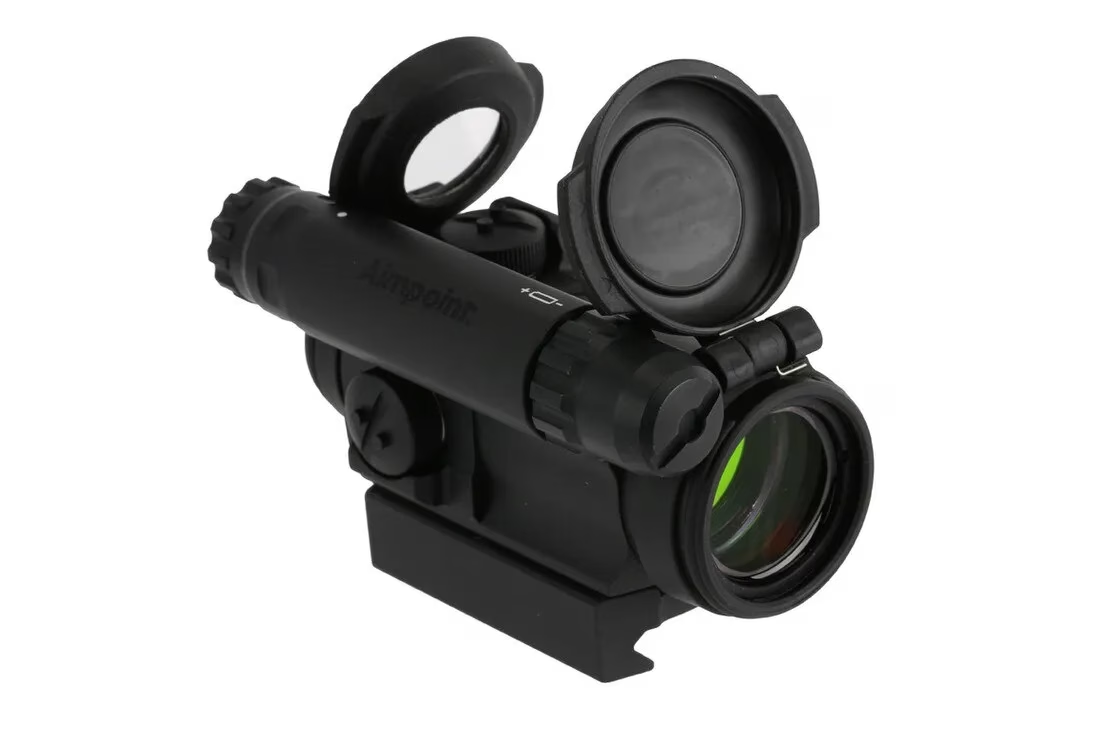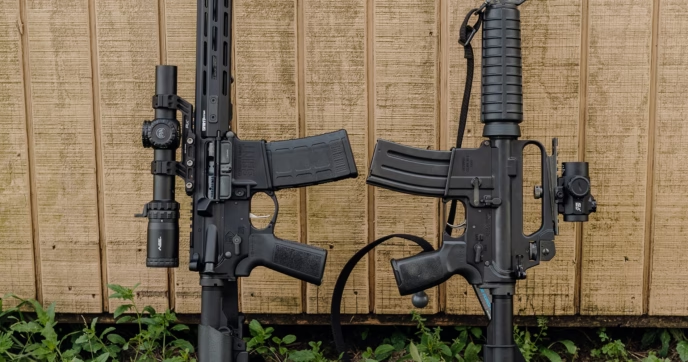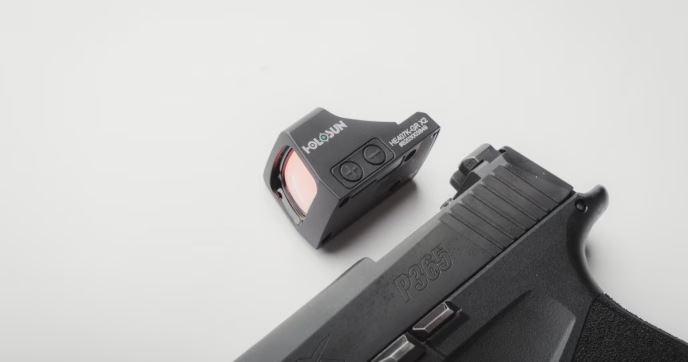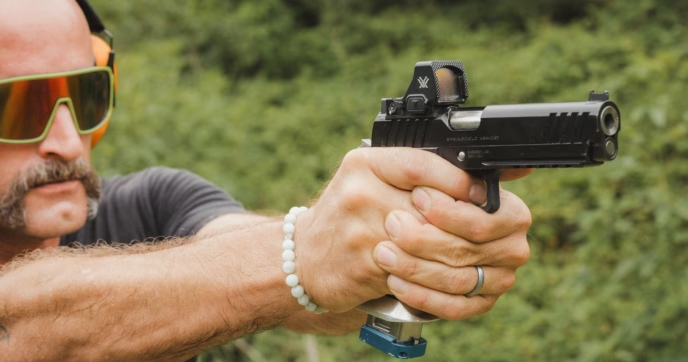.308 Winchester has been around for quite some time, with it being favored for its power and reach. Having been popular since its inception, .308 rifles are used amongst enthusiasts for long-range shooting, hunting, and much more. Although, in the modern space, .308 is typically associated with long-range precision platforms such as bolt-action rifles, it’s seen prevalent use on platforms like the AR-10 and SCAR, both of which can be configured to place more emphasis on speed and versatility.
And since they’re designed for different purposes, the types of optics used on them are much different. With full-power rifle cartridges like .308, the first optic that usually comes to mind are variable power optics like LPVOs and MPVOs, leaving optics like red dot sights overlooked.
Depending on your rifle’s application though, red dot sights can provide you with the versatility you may be looking for, but before you make the switch, there’s a lot to consider when choosing one.
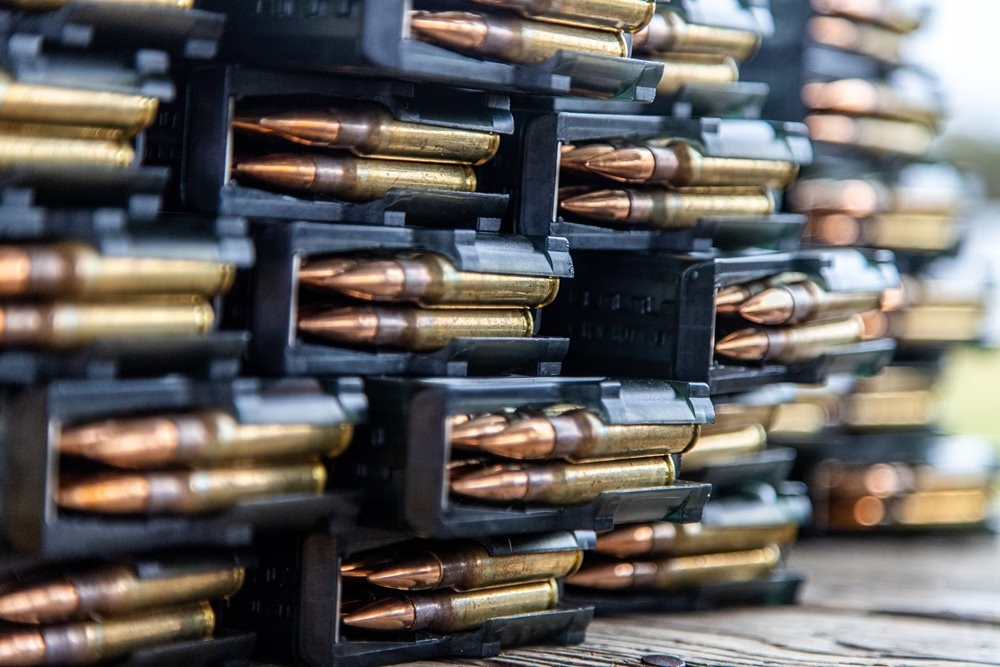
Understanding .308 Winchester
As we mentioned above, .308 Winchester is one of the most common, and popular, full-power rifle cartridges available. Introduced by Winchester in 1952, it was created to match the power and performance of .30-06 while having a more compact size, and after various trials and testing, it was adopted as the new standard issue rifle cartridge for the U.S. Military in 1954. Not long after, it was adopted by NATO as well under the cartridge’s metric designation 7.62x51mm, though it’s usually referred to as just 7.62 NATO.
Today, it’s still a popular, and commonly used for everything from hunting and long-distance shooting to competitive and duty applications. Despite being a full-power rifle cartridge with an effective range of 800+ yards, as mentioned earlier, platforms such as the AR-10, SCAR, and newer rifles like the MCX Spear, are either offered or can be built in a “battle-rifle” configuration. Battle rifles place a heavy emphasis on adaptability—being more compact than DMRs, they’re more agile in close-range engagements, but they can still reliably range out to upwards of 600-700+ yards when needed.
Choosing and Optic
Having the right optic is imperative no matter what rifle you own, but that sentiment is especially true for .308 rifles since the cartridge is so versatile across multiple applications. For general purpose builds that fall into the battle-rifle category, LPVOs are usually one of the go-to optics for the job, but as beneficial as they are, at close range, they don’t offer the most in terms of their overall speed and field of view—and this is precisely why red dot sight options have become a popular addition on these rifles.

Pros of Red Dot Sights
Rapid Target Acquisition
One of the hallmark advantages offered by red dot sights is their agility. While it’s generally recommended to aim with both eyes open regardless of the optic you use, it’s far easier to do so with a reflex sight. As a result, they give you full access to your peripheral vision, allowing you to see more of your surroundings while also allowing you to maintain full focus on the target. When zeroed properly, you’ll be able to quickly see and acquire targets with both eyes, making aiming as simple as putting your reticle on target. In dynamic applications, this is a considerable advantage, as you’ll be able to quickly transition from target to target with practice.
Improved Accuracy at Close to Medium Range
By design, reflex and red dot sights are known best for their close-range performance, but depending on the reticle you opt for, their usable range can be extended. For instance, many Primary Arms red dot sights, along with others from Trijicon, Holosun, and EOTech can come with an assortment of reticle variants, allowing for more versatility across longer ranges.
A prominent example is the ACSS® CQB reticle system, found in optics like the Primary Arms Optics SLx® MD-21 Microdot. This specialized reticle includes a large outer horseshoe and center chevron for fast target acquisition and fine precision, but for far-off targets, it has three additional BDC holds that range out to 600 yards when using .308/7.62 NATO. Other common reticles like circle dot reticles provide a similar degree of versatility as well, especially when using a red dot magnifier (something we’ll touch more on later).
Low-Light Performance
By having an illuminated reticle, you can easily adjust the reticle’s brightness to be visible across a wide range of environments. Even further, most, if not all, modern reflex sights come equipped with night-vision compatible brightness settings, allowing them to be used in conjunction with Night Optical Devices, or NODs.
NV-compatible brightness levels aren’t visible to the naked eye, but under NODs, they can be seen with no issues. Although NODs can be a costly investment, they make your red dot sight usable in near-complete darkness, giving you an edge in any night-time scenario. As such, they’re commonly used by professionals and enthusiasts alike.
Lightweight and Compact Design
Finally, another distinct advantage offered by red dot sights are their lightweight designs, with them weighing anywhere from as little as 2 to 3 ounces to upwards of 9 to 12+ ounces depending on the make and model. Additionally, they’re far more compact than variable power optics, making them a much better option for more maneuverable rifle builds, while also giving you more upper rail space.
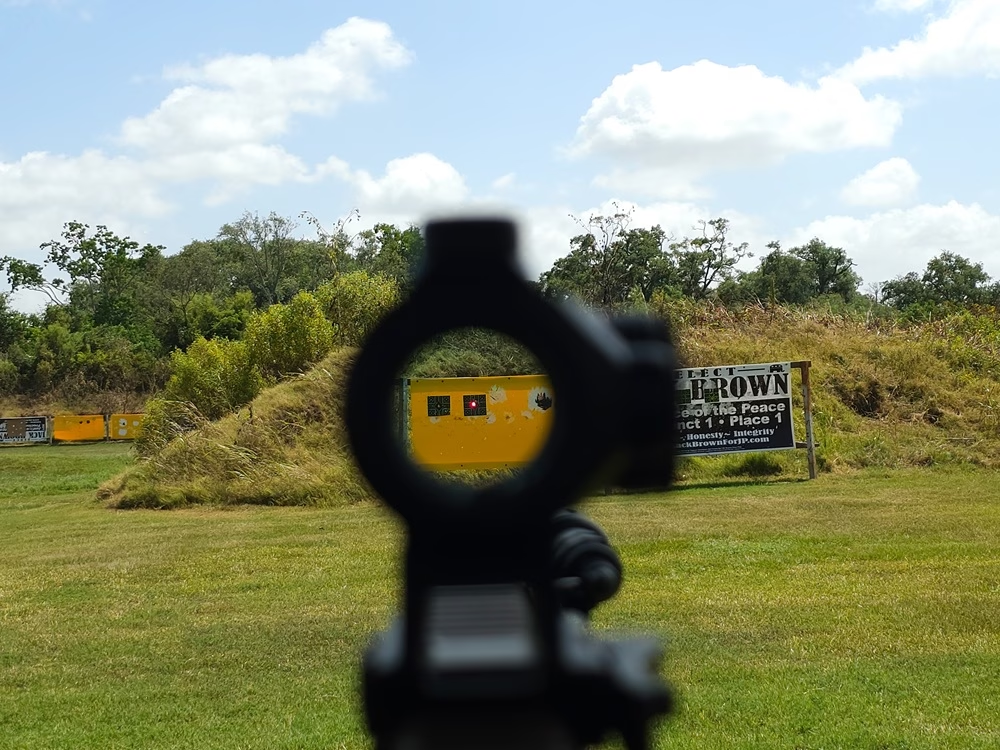
Cons of Red Dot Sights
Limited Range Capability
Despite their many benefits, red dot sights aren’t perfect. For starters, they’re extremely limited in terms of their ranged capabilities. Now, you may be thinking that this completely contradicts our previous statement above, but even with a specialized reticle design, you won’t be able to effectively use your optic without the use of a magnifier.
Red dot sights are primarily designed to maximize speed and agility in dynamic scenarios and close quarters. So, while it’s possible to extend their usable range with enhanced reticles and magnifiers, in their base configuration, they’re extremely limited.
Limited Precision Capabilities
Another considerable limitation red dots have is their precision at far-off distances. Like we mentioned earlier, red dot sights are primarily designed for close-range engagements, so it’s important to recognize that red dot reticles get less precise the farther out your targets are.
Take a 2-MOA dot for instance. At 100 yards, the reticle will cover up roughly 2-inches of the target, meaning you would theoretically be capable of pulling off 2-inch groups on a target at 100 yards. This means that at 200 yards, the dot would cover 4 inches of your target, and so on. So even though .308 is more than capable of being accurate at these distances, a red dot sight isn’t going to be the most conducive optic for the job if long-range precision is your primary goal.
So, Are Red Dots a Viable Option for .308 rifles?
In short, yes, but there’s a lot to consider before you spring for a new optic. At their core, they’re a solid pick for close-range applications, making them a great choice for Battle Rifle builds. However, they aren’t the best choice if you want to be able to reach out to the distances .308 is capable of.
As such, unless you’re building a .308 rifle dedicated for close range use, a red dot alone isn’t going to be your best bet. Fortunately, red dot sights can be used in conjunction with other optics, maximizing their capabilities.

Red Dot Magnifiers
We briefly talked about magnifiers in our earlier sections, but they’re an incredible tool that can extend the range of your red dot sight. If you’re unfamiliar with them, a red dot magnifier is an optic with fixed magnification that can extend the usable range of your red dot sight. Essentially, they’re a type of prism scope, just without a reticle etched into the glass.
Like prism scopes, magnifiers are offered in a wide array of magnification levels, with some of the most common ones being 3x, 5x, and 6x magnification. Additionally, they’re most often attached to mounts that can either flip up or flip to the side, allowing you to easily switch between magnified and unmagnified use.
At their core, magnifiers are an incredibly advantageous tool in dynamic applications where you need to quickly switch between engaging close and far-off targets. Still, you’ll need to bear in mind that your rifle’s ranged capabilities are still going to be limited by your reticle choice, which is where specialized reticles like the ACSS CQB Reticle, Circle Dot Reticles, and other reticles with ranging elements come into play. While you can still get reliable results with a standard dot reticle, you’ll get far more ranged adaptability if it has a specialized reticle with ranging elements.
Red Dot Sight Alternatives
If you’re on the fence about whether a red dot sight is the right optic for your next .308 rifle build, that’s okay. Ultimately, if there was one perfect optic for every rifle, purpose, and caliber, there wouldn’t be such a vast assortment of options to pick from, and fortunately, there are a plethora of rifle scopes that can be a more-than-viable alternative.
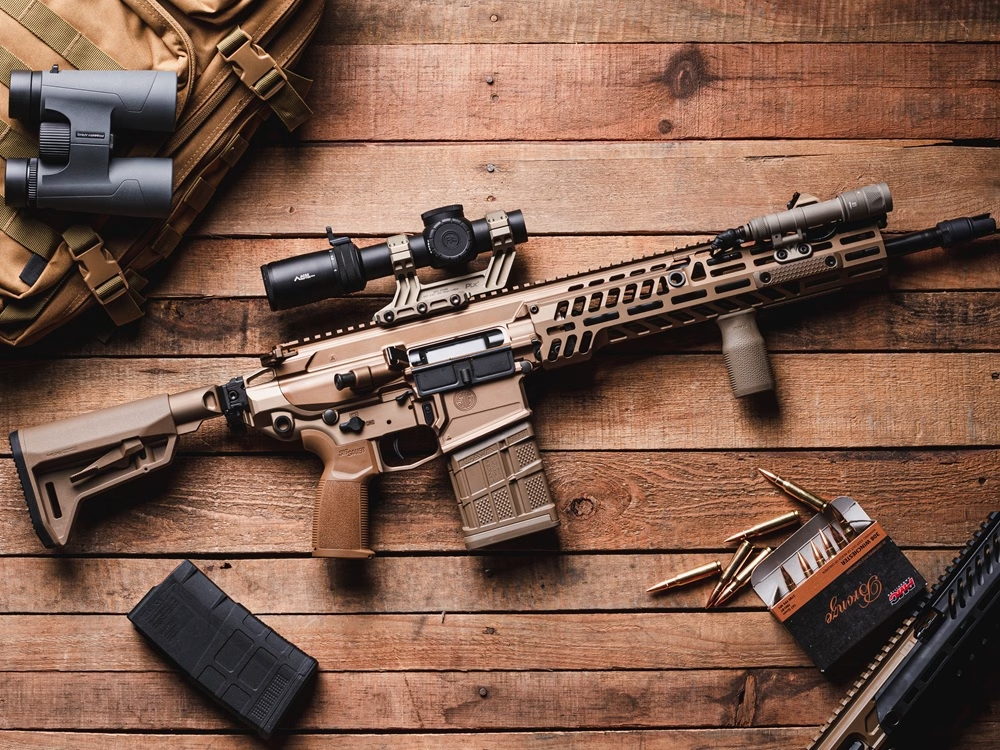
LPVOs
One of the most popular optics for modern .308 rifles and carbines is Low-Power Variable Optics, better known as LPVOs. LPVOs, like the Primary Arms Optics PLxC® 1-8×24 SFP Rifle Scope, are a type of rifle scope designed to blend close- and long-range performance. As their name suggests, they’re offered with a lower magnification power compared to other traditional rifle scopes, with 1-6x, 1-8x, and 1-10x magnification ranges being among the most common.
At 1x magnification, these scopes offer agility that’s nearly on par with reflex sights, and they also provide a wide FOV, allowing you to easily aim with both eyes open. With that in mind, it’s important to note that they aren’t going to provide the same level of agility afforded by red dot sights. LPVOs, by design, are a type of rifle scope, meaning you’ll have to take their eye box and eye relief into account when aiming. Reflex sights offer a generous eye box and near-unlimited eye relief, but LPVOs require you to have your head placed in a specific location, lest you experience scope shadow or a blurry sight picture.
Still, despite these hang-ups they offer incredible versatility across different ranges. Much like a red dot and magnifier combo, you can easily and quickly adjust your LPVOs magnification to engage targets at further distances. Plus, LPVOs can house more complex reticles, complete with MIL grids, BDC holds, wind holds, and moving target leads, all of which can be used to maximize your accuracy at long-range. There’s a lot to cover when discussing these optics, and we cover go further in-depth on their versatility in our guide on the best LPVOs for AR-10s—we recommend checking it out to get a better understanding of the intricacies of these optics.
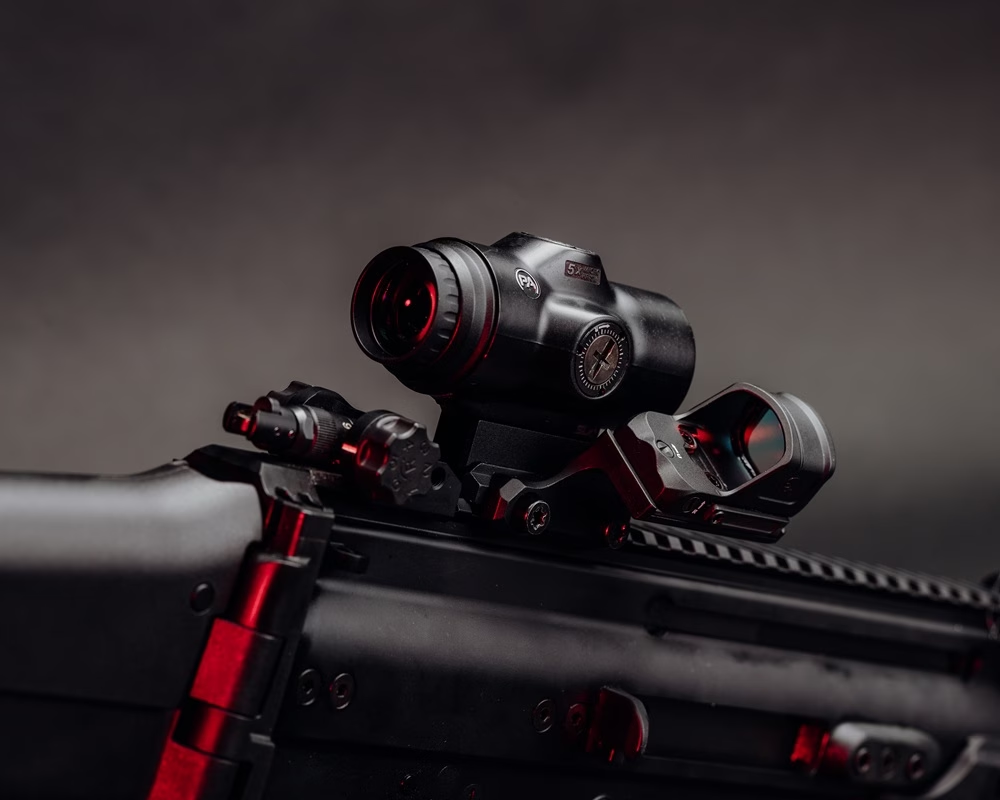
Offset Red Dot Sights
If you decide to opt for a rifle scope like an LPVO or a prism scope, running a reflex sight isn’t entirely off the table. One of the downsides to running a variable power optic is that they require you to take a hand off the rifle to change magnification when switching from high to low power, or vice versa. While it isn’t necessarily a lengthy process per se, in dynamic scenarios such as competitive shooting disciplines where every second counts, the extra second or two needed to adjust your optic’s magnification can add up quick. As such, many enthusiasts opt for offset red dot sights.
With an offset red dot, you can quickly switch to an unmagnified optic by simply adjusting your head position, allowing you to maintain positive control of your rifle. So long as you use the right offset red dot mount, you can run just about any red dot sight too. Enthusiasts commonly run micro red dots like the PAO SLx® Advanced Rotary Knob Microdot, and mini-reflex sights like the PLx® HTX-1™, SLx® RS-10R, and others like the Trijicon RMR.
Conclusion
Despite having been developed in 1950s, .308 Winchester is still a favored caliber for nearly every shooting discipline, ranging from long-range precision to competitive and duty applications. With its military pedigree and extensive use in civilian applications, it’s utilized on several rifle platforms, with red dot sights being a common optic pairing for them due to their versatility across different applications.
Red dot sights offer a simple aiming solution in a lightweight and compact package. Weighing well-under a pound in most instances, modern options can even project multiple reticles to further their capabilities—plus, when paired with other optics like a magnifier, you can effectively land hits on targets at further distances. Still, like all optics, red dot sights aren’t perfect for everything as their long-distance performance often leaves something to be desired as their precision decreases as your target distance increases.
At the end of the day, red dot sights can be a more-than-welcome addition to .308 rifles, but if you plan to put one on yours, it’s important to know how they stack up against other optics. If you’re thinking that a red dot sight isn’t a good fit for your build, you can always opt for a variable power optic with an offset dot. But if a red dot sounds like a good pick, we recommend starting your search by checking out the PAO GLx® MD-21s Push-Button 21mm Microdot.
